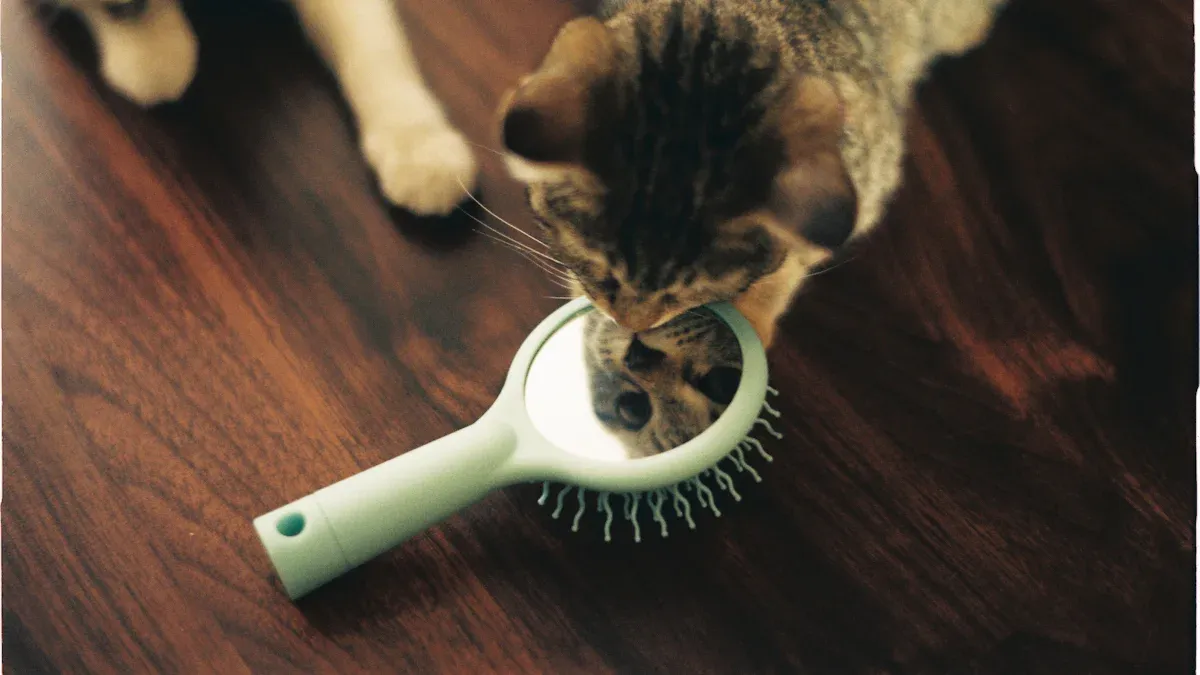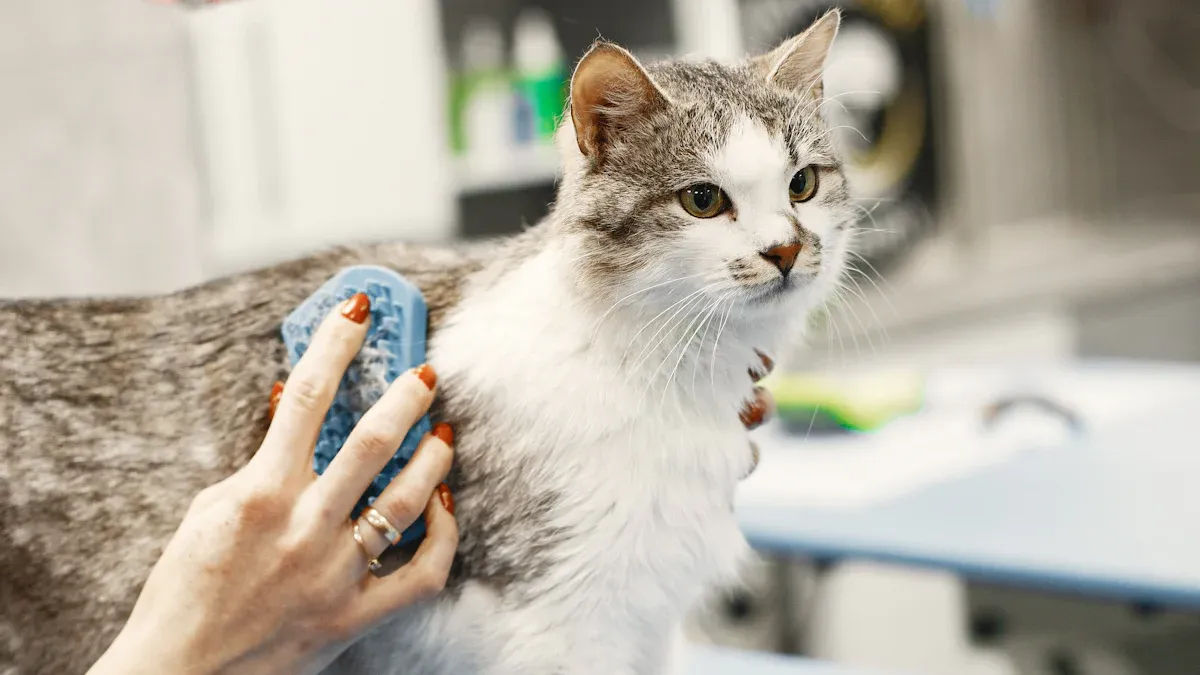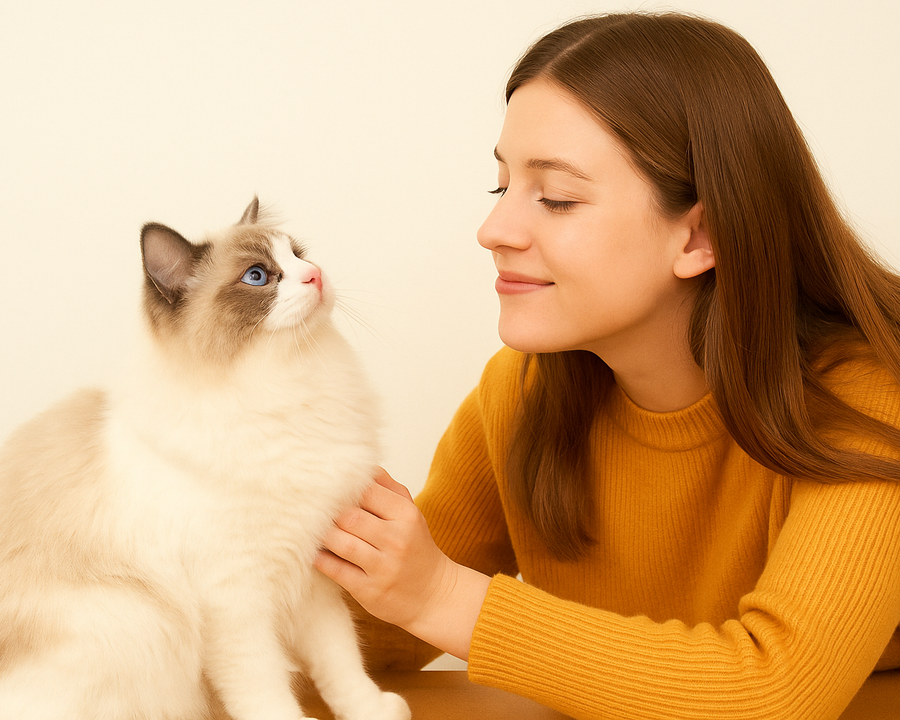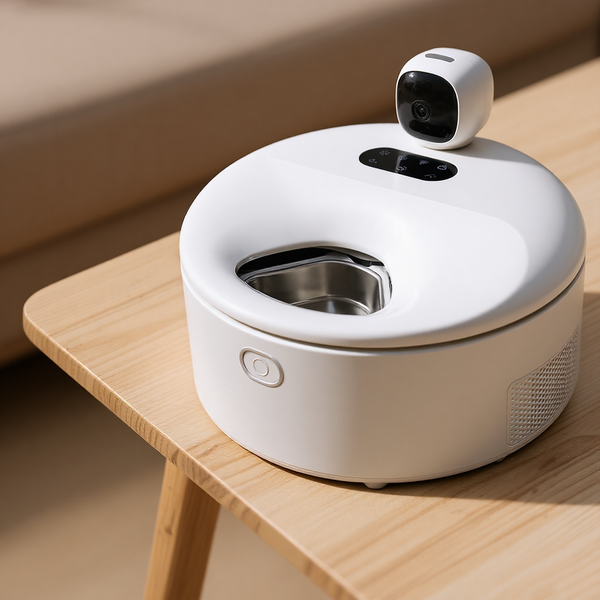
Want your cat to look good and feel happy? You should use these top 10 cat grooming supplies. They are brush or comb, nail clippers, cat shampoo and conditioner, ear cleaner, dental care tools, grooming wipes, flea comb, grooming gloves, slicker brush, and dental water additives. Grooming your cat often keeps fur clean. It helps remove dirt. You can check for bumps. It also makes your cat happier.
Key Takeaways
-
Regular grooming keeps your cat's coat clean and healthy. It helps remove dirt, loose fur, and prevents mats.
-
Using the right grooming supplies makes the process easier and safer for both you and your cat. Choose tools that match your cat's coat type.
-
Grooming strengthens the bond between you and your cat. Gentle strokes and calm handling help your cat feel secure and relaxed.
Why Grooming Matters

Health Benefits
Grooming does more than keep your cat looking cute. When you brush your cat, you help remove loose fur and dirt. This stops mats from forming and keeps the skin healthy. Regular grooming spreads natural oils across the coat, making it shiny and soft. You also get a chance to spot any bumps, cuts, or fleas early. This helps you catch health problems before they get worse.
-
Grooming keeps the skin healthy by boosting blood flow.
-
It removes dead hair and dirt, which lowers the risk of skin infections.
-
Brushing helps reduce hairballs because your cat swallows less loose fur.
-
You can find lumps or signs of parasites before they become serious.
Tip: Using the right cat grooming supplies makes each session easier and safer for both you and your cat.
Bonding and Comfort
Grooming time is not just about health. It is also a great way to bond with your cat. When you use gentle strokes and a calm voice, your cat feels safe and relaxed. Many cats love the attention and will start to trust you more. This trust can make your cat seek comfort from you during stressful times.
-
Grooming helps your cat feel secure and calm.
-
Shared grooming moments build trust and deepen your connection.
-
A calm setting and gentle handling lower your cat’s anxiety.
You can turn grooming into a special routine. Your cat will look forward to these moments, and you will enjoy a happier, healthier pet.
Cat Grooming Supplies
Brush or Comb
You want your cat’s coat to stay smooth and healthy. The right brush or comb makes a big difference. Cats have different coat types, so you should pick a tool that matches your cat’s fur. Here’s a quick guide to help you choose:
|
Brush Type |
Description |
|---|---|
|
Pin Brushes |
Gentle for daily use, great for minor tangles, rubber tips for comfort. |
|
Bristle Brushes |
Removes loose hair, smooths the coat, perfect for homes with many cats. |
|
Slicker Brushes |
Good for daily brushing, works well for short-haired cats’ undercoats. |
|
Skip Tooth Combs |
Best for long-haired cats, reaches the undercoat easily. |
|
Deshedding Tools |
Removes extra fur, ideal for thick coats. |
|
Dematting Rakes |
Handles tough mats, safer than scissors. |
|
Grooming Gloves |
Gentle, helps cats get used to grooming, good for sensitive cats. |
|
Curry Brushes |
Removes loose hair, massages during baths. |
|
Self-Cleaning Brushes |
Easy to use, often slicker style. |
|
Rubber Brushes |
Comfortable, removes fur but may not hold it well. |
Some top picks include the Hartz Groomer's Best Combo Brush for all coat types, the Andis Deshedding Tool for thick coats, and the Safari Self-Cleaning Slicker Brush for easy use. Try brushing your cat a few times a week. This keeps fur from matting and helps you spot any skin problems early.
Tip: Start with gentle strokes and reward your cat with treats to make grooming a positive experience.
Nail Clippers
Keeping your cat’s nails trimmed is important for their comfort and your furniture’s safety. Look for nail clippers with safety guards to avoid cutting too deep. Ergonomic handles help you keep a steady grip, and sharp blades make clean cuts.
-
Safety guards protect the quick (the sensitive part inside the nail).
-
Ergonomic design keeps your hand comfortable and steady.
-
Sharp blades reduce stress for your cat.
You should trim your cat’s nails every 10 days to 2 weeks. Older cats may need more frequent checks because their claws can get stuck or overgrown. If your cat stays indoors, regular trims are even more important.
Never use human nail clippers. Cat-specific clippers are safer and easier to control.
Cat Shampoo & Conditioner
Cats usually keep themselves clean, but sometimes they need a bath. Choose a shampoo and conditioner made for cats, especially if your cat has sensitive skin. Here are some gentle options:
|
Product Name |
Key Ingredients |
Benefits |
|---|---|---|
|
Ophytrium Shampoo |
Ophytrium (plant-based prebiotic) |
Supports healthy skin, prevents infections. |
|
Earthbath Oatmeal & Aloe |
Colloidal oatmeal, Aloe vera |
Soothes and moisturizes sensitive skin. |
|
DermAllay Oatmeal Shampoo |
Ceramides, oat protein, safflower seed oil |
Strengthens skin, relieves itchiness. |
|
Douxo® S3 Calm Shampoo |
Ophytrium |
Calms irritation, hydrates, supports skin barrier. |
Most cats only need a bath every 4-6 weeks. Long-haired cats may need one every 4 weeks. Hairless breeds, like Sphynx, need weekly baths. Always follow your vet’s advice if your cat has skin problems.
Use lukewarm water and rinse well. Never use human shampoo on cats.
Ear Cleaning Solution
Cats can get wax and dirt in their ears, which may lead to infections or ear mites. Use a gentle ear cleaning solution made for cats. Some good choices are Oxyfresh Ear Cleaner, TrizEDTA® Aqueous Flush, and TrizULTRA+Keto® Flush. These products soothe the ear, remove debris, and help prevent infections.
-
Clean your cat’s ears once or twice a month if they stay clean.
-
If your cat’s ears get dirty often, clean them weekly.
-
Always check your cat’s ears every month.
Avoid alcohol or hydrogen peroxide. These can hurt your cat’s ears. Ask your vet for advice if you notice redness or a bad smell.
Dental Care Supplies
Dental health is just as important for cats as it is for people. You can use several cat grooming supplies to keep your cat’s teeth clean:
-
Tooth brushing with cat-safe toothpaste (like PetSmile Toothpaste).
-
Dental diets, such as Hill’s Prescription Diet t/d.
-
Dental gels and sealants, like OraVet and SANOS.
-
Water additives (see below).
-
Dental chews and wipes.
Daily brushing is best, but even a few times a week helps. Dental care prevents plaque and tartar, which can lead to painful gum disease.
Start slow. Let your cat taste the toothpaste first, then gently introduce the brush.
Grooming Wipes
Grooming wipes are handy for quick cleanups. They are perfect for cats with allergies or sensitive skin. Many wipes are eco-friendly, hypoallergenic, and free from harsh chemicals.
|
Benefit |
Description |
|---|---|
|
Eco-friendly |
Made from plant fibers, gentle on skin. |
|
Hypoallergenic |
Safe for cats with allergies or sensitive skin. |
|
No harsh stuff |
No alcohol, parabens, or dyes, so less risk of irritation. |
You can use wipes to clean your cat between baths. They help reduce dander and shedding, and they keep your cat smelling fresh.
Wipes are great for cleaning paws, faces, and hard-to-reach spots.
Flea Comb
A flea comb is a must-have if you want to keep your cat free from fleas. Look for a comb with fine metal teeth. This design traps fleas and eggs as you comb through your cat’s fur. Some combs have two sides for different areas, and you can find shorter or longer teeth for different coat lengths.
|
Feature |
Benefit |
|---|---|
|
Fine teeth |
Catches fleas and eggs. |
|
Metal build |
Lasts longer than plastic. |
|
Two-sided design |
Works for all parts of your cat’s body. |
|
Short/long teeth |
Fits both short and long-haired cats. |
Comb your cat slowly and check the comb for fleas after each stroke. Dip the comb in soapy water to kill any fleas you find.
Grooming Gloves
Grooming gloves let you pet your cat while you remove loose hair. They are gentle and help nervous or sensitive cats get used to grooming. You control the pressure and speed, so your cat feels comfortable.
-
Gloves help you bond with your cat.
-
They are good for light shedding and surface hair.
-
Gloves do not reach deep into thick fur, but they are great for daily use.
Use gloves for quick sessions or when your cat is nervous about brushes.
Slicker Brush
Slicker brushes work well for long-haired cats. They have fine, curved pins that reach deep into the undercoat. This helps remove loose hair, dirt, and tangles. Slicker brushes prevent mats, which can be painful for your cat.
-
Slicker brushes reach the undercoat and remove dead hair.
-
They help stop mats and tangles before they start.
-
Long-haired cats like Persians and Maine Coons need regular slicker brushing.
Brush gently to avoid scratching your cat’s skin. Use after dematting to keep fur smooth.
Dental Water Additives
Dental water additives make oral care easy. You just add them to your cat’s water bowl. These products fight plaque and tartar, freshen breath, and help control bacteria.
-
No brushing needed—just add to water.
-
Freshens breath and supports healthy gums.
Studies show that water additives with xylitol can lower plaque and tartar. This helps prevent dental disease and keeps your cat’s mouth healthy.
Change your cat’s water daily and follow the instructions on the bottle for best results.
Using the right cat grooming supplies keeps your cat healthy, happy, and looking great. Try different tools to see what your cat likes best, and make grooming a regular part of your routine.
Choosing Products
Coat Type & Age
Every cat has a unique coat and age, so you need to pick grooming tools that fit your cat’s needs. Short-haired cats do not need as much brushing, but they still benefit from regular care. Long-haired cats need daily attention to keep their fur smooth and free of mats. Curly-haired cats need gentle handling to protect their curls. Kittens and senior cats may need softer brushes or gloves because their skin is more sensitive.
Here’s a quick guide to help you choose:
|
Coat Type |
Recommended Tool |
Grooming Frequency |
|---|---|---|
|
Short-haired |
Bristle Brush (e.g., Aspen Pet Furbuster) |
|
|
Long-haired |
Slicker Brush (e.g., JW Gripsoft) |
Daily |
|
Curly-haired |
Grooming Gloves (e.g., JW 3-In-1) |
As needed, gentle handling |
-
Short-haired cats: Brush once a week to keep their coat shiny.
-
Long-haired cats: Use a slicker brush every day to stop tangles.
-
Curly-haired cats: Try grooming gloves and be gentle to keep curls healthy.
Tip: Always check your cat’s skin for bumps or irritation during grooming.
Safety & Quality
You want your cat to stay safe and healthy, so always choose products made for cats. Some cleaners and ingredients can hurt your cat. Ammonia-based cleaners can cause breathing problems and skin irritation. Essential oils, even in small amounts, can damage your cat’s liver or cause breathing trouble. Always read labels and avoid harmful ingredients like citric acid.
Safer choices include baking soda for odors, distilled white vinegar for cleaning, and 3% hydrogen peroxide as a gentle disinfectant. Cat-specific products keep your pet safe and comfortable.
Note: Never use human products on your cat. Cat grooming supplies are made for their special needs.
Grooming Mistakes
Over/Under Grooming
You want your cat to look and feel great, but it’s easy to make mistakes with grooming. Some people brush their cats too much. This can irritate the skin and make your cat dislike grooming time. Other people forget to groom their cats often enough. When you skip brushing, your cat’s fur can get tangled or matted. Mats hurt and can lead to skin problems.
Here are some signs you might be over or under-grooming:
-
Your cat’s skin looks red or sore after brushing.
-
You see mats or tangles in your cat’s fur.
-
Your cat hides when you bring out the brush.
Tip: Try to brush short-haired cats once a week and long-haired cats every day. Watch how your cat reacts. If your cat seems upset, take a break and try again later.
Wrong Products
Using the wrong products can cause trouble for your cat. Human shampoos, harsh cleaners, or tools not made for cats can hurt their skin or make them sick. Always pick cat-safe shampoos, brushes, and wipes. Check labels for safe ingredients.
|
Mistake |
What Can Happen |
How to Avoid |
|---|---|---|
|
Human shampoo |
Dry, itchy skin |
Use cat shampoo only |
|
Dull nail clippers |
Split or cracked nails |
Pick sharp, cat nail clippers |
|
Scented wipes |
Allergies or skin irritation |
Choose unscented, cat wipes |
Note: If you’re not sure about a product, ask your vet before using it.
A balanced grooming routine keeps your cat happy and healthy. Watch for changes in your cat’s coat or mood. Adjust your routine as needed. Your cat will thank you with purrs and cuddles!
You want your cat to feel great and look its best. The right cat grooming supplies help you keep your pet healthy and happy. Try to make grooming a regular habit. You will notice stronger bonds and fewer health problems. Your cat will thank you with purrs and cuddles! 🐾
FAQ
How often should you groom your cat?
You should brush short-haired cats once a week. Long-haired cats need daily brushing. Regular grooming keeps your cat’s coat healthy and helps you spot problems early.
Can you use baby wipes on your cat?
No, you should not use baby wipes. Always pick cat-safe grooming wipes. Baby wipes can have chemicals that may hurt your cat’s skin or cause allergies.
What if your cat hates being brushed?
-
Try grooming gloves for a gentle touch.
-
Use treats and praise to make grooming fun.
-
Start with short sessions and stop if your cat gets upset.




